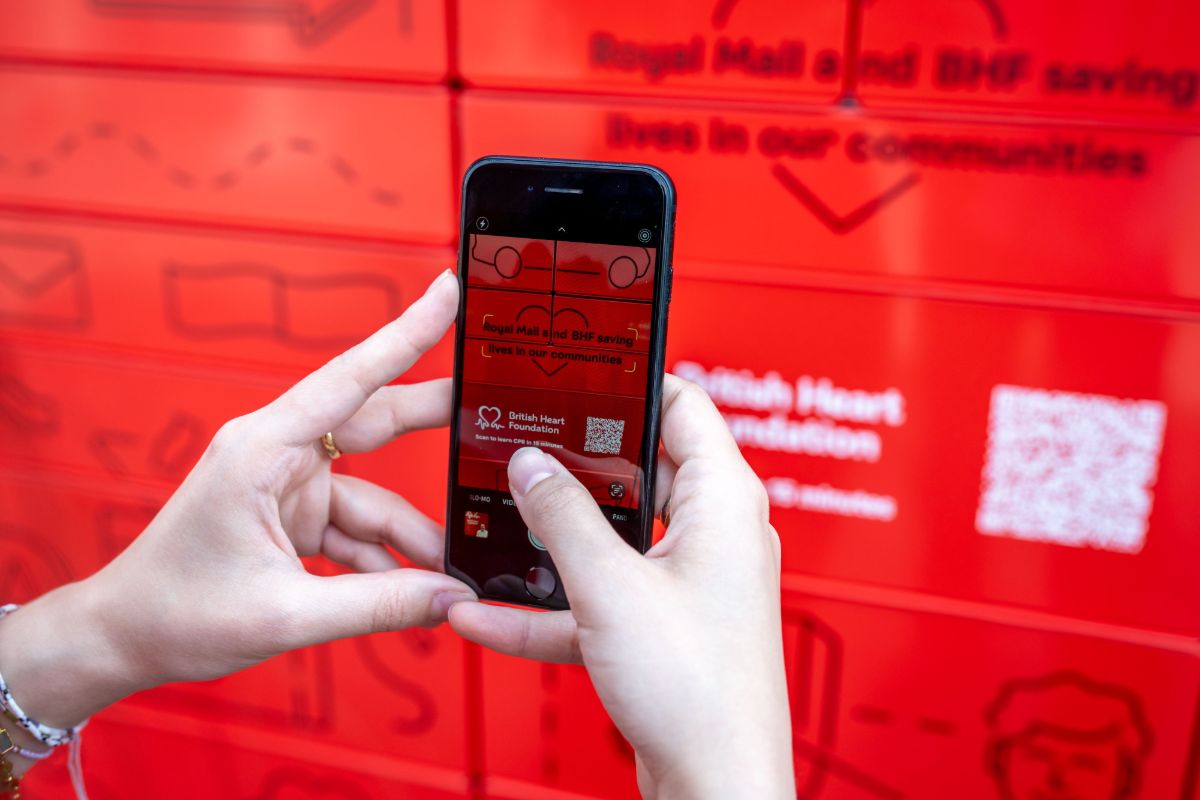At a time when shopping behaviour is changing quickly, Chloe Rigby considers how retailers are most effectively engaging with their customers.
Retailers and brands are working hard to engage shoppers and give them reasons to spend with them. But the brand engagement task is more difficult when shoppers appear to be holding off from spending on non-essential items. When shoppers do buy, it’s often because they’re being offered a discount, with more of these purchases than ever now taking place online.
This shift presents a challenge for established UK retailers who are better equipped to serve shoppers buying mostly from stores than across sales channels. But it also presents opportunities to those that are agile enough to find new ways to inspire and to talk with their customers.
Shifting terms of engagement
A shift in the way that shoppers are buying is clear from the figures. This has implications for where, and how, retailers now choose to engage with their existing and potential customers. The latest British Retail Consortium (BRC) figures suggest that spending slowed both online and offline in February 2019. Retail sales for the month fell by 0.1% on a like-for-like basis that strips out the effect of store – and business – openings and closures, according to the BRC-KPMG Retail Sales Monitor. These are shoppers, says the BRC, who are feeling less confident about buying in the first place.
When the figures were released, Helen Dickinson, chief executive of the BRC, said slowing sales reflecting the wider political situation. “Uncertainty surrounding the UK’s imminent exit from the European Union has hit consumer spending,” she said. “The slowdown was not limited to physical stores,” she added, “with growth in online non-food sales well below the 12 month average. With consumers increasingly aware of the risk of a no deal Brexit, it is likely that uncertainty has driven this cautious approach to retail spending.”
When people do buy, it’s now gradually more likely to be over the internet than it was previously. Visitor numbers are falling in shops, while at the same time the proportion of sales taking place online is growing – even where the total overall amount being spent is staying broadly similar. In February, the BRC figures showed, 29.6% of sales took place online – up from 27.5% a year earlier. For the moment, that still leaves around 70% of retail sales taking place in-store but in the longer-term, the trend is towards more sales taking place online than in previous years.
Meanwhile, footfall is falling steadily. According to the February 2019 edition of the BRC-Springboard Footfall and Vacancies Monitor, visitor numbers continued their decline to high streets, retail parks and shopping centres alike. It’s all representative, says BRC’s Dickinson, of the fact that, “retail is undergoing a seismic shift, with technology changing the way we shop. Consumers are making fewer visits to physical stores, choosing to research and pay for
a greater proportion of their purchases online.”
Engaging stores
Changing shopping behaviour presents retailers with the necessity of standing out from the crowd, whether that’s on the high street or online. On the high street, at a time when shoppers are making fewer visits to stores, those that give them a good reason to are more likely to win out.
Retail property developer and operator Hammerson suggests that stores are still important at a time when online is getting very crowded. It argued in its full-year results, published in February 2019, that retailers still need stores in the right places if they are to make their presence felt.
“With the growth in online shopping and the increasing scale of the largest players in the market, it is more important than ever for brands to stand out from the crowded and expensive first page of Google’s shop window,” it said. “The very best physical stores in prime locations are proving more and more important for consumer brands seeking to stand out and deliver a true omnichannel offer.”
The BRC’s Dickinson says that one answer is to change the way the stores sell. What’s required, she says, is a “reinvention of retail, with outlets investing in their physical space to encourage a more experience-led approach to shopping.”
That’s something that Hotel Chocolat is doing. The chocolate manufacturer and retailer has focused on building the in-store brand experience. In-store events include chocolate lock-ins and bean-to-bar workshops, where participants can find out more about the end-to-end process of making chocolate. In doing so, the retailer engages with chocolate aficionados through their shared passion. Finding a shared interest has also been key for retailers from Andertons Music Co to Evans Cycles, which has led cycle rides from its stores.
Games Workshop hosts events and workshops based around the tabletop war game in its stores, while also taking the conversation online. The retailer’s Warhammer TV channel has more than 276,000 subscribers at the time of writing. Debenhams, meanwhile, has a very active Debenhams Beauty Club online community that enables shoppers to test products, ask others what they thought, and get recommendations.
Of course, not everyone sells goods that shoppers are passionate about. For those retailers, John Lewis may offer a model. The department store group has focused on services as a way to give its shoppers a reason to come in store. It offers a concierge-style experience desk, where visitors can book anything from a table in a restaurant to a place in a specialist workshop on subjects from the perfect lighting, to smart homes, to fashion. This can help shoppers get to grips with products that they want to use but are not expert, or even passionate, about. The retailer has described its approach as that of creating a ‘brand experience’. By doing so, it hopes to become the go-to retailer for shoppers buying anything, whether it’s the latest technologies or just everyday kitchen items.
Engaging via mobile
Shoppers are fast adopting smartphones as their preferred method of buying online. Analysis from etail trade association the IMRG found that over the Christmas quarter, from November 2018 to January 2019, 40.4% of all retail spending was via a smartphone, with 39.7% spent via desktop and 19.9% via tablet.
The finding, which emerged in quarterly data from the IMRG Capgemini eRetail Sales Index, marks the first time that shoppers collectively spent more money online through their smartphones than through other devices. Lucy Gibbs, senior consultant in retail analytics at Capgemini Invent, said at the time: “Smartphones make it easier to be truly omnichannel, which is about being where your customers are, and therefore optimally placed for influencing the retail customer journey.” The suggestion is that if you can get engagement right on smartphone, then any retailer can reap the benefits.
Every mobile engagement strategy will be different, as retailers look to meet the needs of varied groups or demographic of shoppers. Customers may well want to download an app for those brands that they use the most, whenever it’s really useful, while they’ll want to engage with others via high functioning mobile websites. Debenhams has chosen to invest in a progressive web app approach that enables its mobile site to load quickly even when shoppers are not using a fast internet connection. Others opt for apps to give deeper engagement with the end shopper.
But retailers must offer something special if they are to convince customers to give them space on their smartphone. In fashion, Missguided is known for the Tinder-style feature on its app that shoppers use to talk to the retailer about what styles they like – in order to be presented in the future with items that best reflect their style.
Boots also stands out here for the way shoppers can use its app to collect and spend loyalty points across channels. Tesco customers can use the Tesco Pay+ app to collect and spend clubcard points, scan and pay for shops worth up to £250 in store, and track their spending with the supermarket. The app is both useful for shoppers wanting the convenience of buying easily and quickly in store, and for Tesco, since it gets to know its shoppers better.
Both Boots and Tesco are, however, among the minority of Top500 retailers. RetailX research shows that just 37% of Top500 retailers had an iOS mobile app in 2019 – and only a small minority of those enable shoppers, as Boots does, to create a new loyalty account via an iOS mobile app or to enter the details of an existing account. Offering convenient loyalty on a mobile, then, seems a strong approach for retailers looking to steal a march on rivals.
Socially speaking
Mobile is also the place that many shoppers go to view their social media accounts while travelling, at work, shopping in a store, or dual screening from the sofa. But while most Top500 retailers operate social media channels – 94% have Facebook accounts and 88% are on Twitter – not all choose to connect them closely to their retail websites. More than a third (34%) of Top500 retailers enabled shoppers to share a product on social channels on their app, while 24% show social media Likes on product descriptions on the app.
From desktop websites, almost a third (30%) of 2019 Top500 retailers enabled users to share a product with friends on social media, while 8% enabled them to Like a product on social media through a link on the product page in 2019. That’s changed since last year, when 53% of retailers included in the Top500 in both 2018 and 2019 enabled sharing via social media, and 18% enabled social media Likes.
Why the change? Jack Cooper, digital marketing manager at Andertons Music Co, may have an answer. “From an SEO standpoint, my knowledge tells me that it’s kind of a small opportunity to show Google that you get the social signals,”he says. “We find there are plenty of ways to do that. We get a lot more shares of our social post natively. We opt for distraction-free shopping, so when you’re on a product page, you’re really just looking at the details and the value proposition of how easy is it to check out. It’s about how can I get this product? Are they competitive on price? Is it fit for purpose?
“Instead, we include product stamps on all our ecommerce news stories and in all of our blogs too. We’d much rather people shared our content that included links to the products in it. So we do share on social but we do it in a roundabout way.”
When considering new approaches to engagement, however, it’s important not to neglect those that already work well. It’s likely that none of these channels will be enough on their own.
Shoppers are not leaving stores behind as they move into a mobile-only future. Rather they are opting to buy and engage via a range of channels. Retailers that find out how their customers want to engage, and enable them to do so via the channels that work for them, will ultimately stand a better chance of engaging with them on their own terms.







